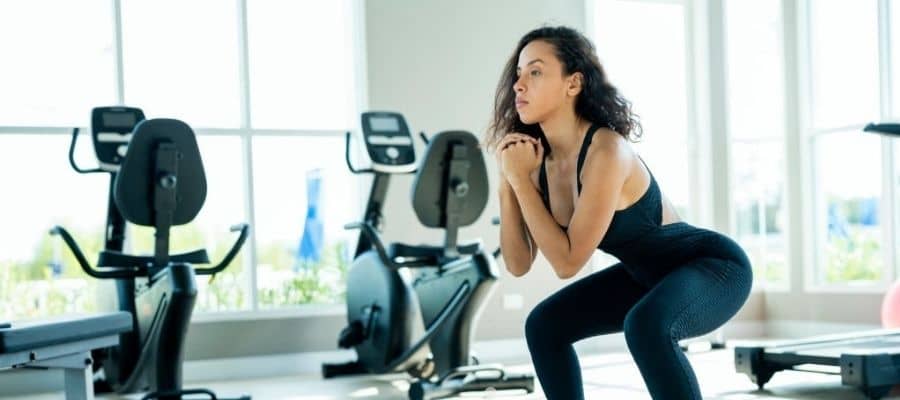
Stretching before an elliptical workout is a significant part of any fitness routine. Preventing injuries and preparing your body for optimal performance are both benefits of a warm-up. To get the most out of your elliptical workout, read on for a few warm-up activities to try.
Benefits of Stretching Before Elliptical
Did you guys know that pre-workout stretching is usually frowned upon? If you’re wondering, then let me explain. Muscles need to contract as vigorously as possible when working out, and stretching puts them in a stretched state, reducing their ability to contract rapidly and powerfully.
Stretching before lifting weights can make you feel weaker and more wobblier during your workout, which is contrary to what you’d think. Is there a better option? In order to get the most out of your workout, scientists advocate a dynamic warm-up that involves working the muscles that will be used.
Think of the warm-up like having your vehicle aligned; the appropriate blend of exercises will improve posture, set joints and muscles in the right position and keep you safe. When you take the time to properly warm up before working out, it will make the experience more enjoyable.
When you do a good warm-up, you will be able to run and leap further and quicker. Physically and mentally, it improves your range of motion and boosts your motivation and concentration. Warming up is essential if you plan to use the elliptical. In an elliptical machine, the calf muscles are targeted because you’re pedaling in an elliptical pattern and using forward and backward motions.
5 Best Pre-Elliptical Stretches
Wall Stretches
Easy to do anywhere, anytime, this is one of our favorite calf-stretching moves. stand in front of a wall and position yourself approximately an arm’s length away from it in a lunge position with your left foot behind your right. Right knee bent, heel pushed into the floor, keep left leg straight. When you feel a stretch at the back of your calves, stand up straight and hold the stretch for about 30 seconds before doing the step on the other side.
Trunk Rotations
In addition to enhancing blood flow, trunk rotations assist increase flexibility and strength in the shoulders, legs, and core as well. The best position for doing trunk rotations is to lie down with your knees bent and your feet flat on the floor. While keeping your arms at your sides, push your shoulder blades together and flatten your neck toward the floor. Keep your right shoulder blade and forearm flat on the floor as you continue to twist your body. Remain in this position for 3 to 5 minutes before switching to the other side and repeating.
Step Stretch
Place your right foot behind your left and only the ball of your foot touches the platform. Bend your left knee and press your right heel down towards the ground to complete the movement. Hold for 30 seconds, then switch sides and repeat.
Butt Kicks
Butt kicks help to raise the body’s core temperature while also warming the legs. To do butt kicks, simply bend your knee and kick your lower leg behind you until your heal touches your glutes. This is a really simple movement.
Pike Stretch
Pike stretches your hamstrings and calves, which is why it is so effective. To complete a pike stretch, you must stand with your legs, shoulder-width apart. Continue by lowering your hands in front of your toes. Make an inverted V shape with your body by lowering yourself into the downward dog yoga pose while keeping your hands shoulder-width apart. Throughout the exercise, remember to keep your knees straight. Maintain this position for a total of 30 seconds.
Final Words
Warming up with exercises that target the same muscles you’ll use during your workout is always a good idea. Bare in mind that the best type of warm-up is a personal process that can only be learned through repetition and experience. Try several methods of warming up your body to find what works best for you. Remember that a decent warm-up should create just mild to moderate perspiration, but should not leave you exhausted or unable to work out. Because that’s what it’s called: a warm-up.
Read Next:
